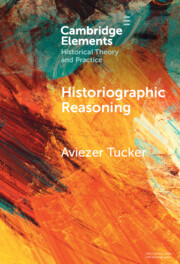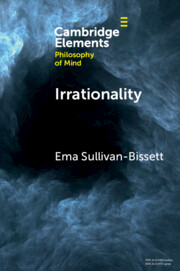Refine search
Actions for selected content:
320 results
24 - Evidence-based practice
- from Part 5 - Drives Innovation
-
-
- Book:
- Leading and Managing Health Services
- Published online:
- 15 August 2025
- Print publication:
- 28 August 2025, pp 268-275
-
- Chapter
- Export citation
Rethinking Marriage: Blurring the “Legal” and the “Social”
-
- Journal:
- Law & Social Inquiry , First View
- Published online by Cambridge University Press:
- 04 August 2025, pp. 1-38
-
- Article
-
- You have access
- Open access
- HTML
- Export citation
6 - Implications for Political Legitimacy and the Theory of Legitimacy
- from Part II - Political Legitimacy and Theory of Politics
-
- Book:
- The Law and Politics of International Legitimacy
- Published online:
- 14 July 2025
- Print publication:
- 24 July 2025, pp 92-98
-
- Chapter
- Export citation
Giving medical evidence to the First-tier Tribunal (Mental Health)
-
- Journal:
- BJPsych Advances , FirstView
- Published online by Cambridge University Press:
- 11 July 2025, pp. 1-13
-
- Article
- Export citation
Intuitionist Anti-Skepticism, Evidence, and Disagreement
-
- Journal:
- Canadian Journal of Philosophy , FirstView
- Published online by Cambridge University Press:
- 30 June 2025, pp. 1-9
-
- Article
-
- You have access
- Open access
- HTML
- Export citation
8 - Perpetrator Depictions of Violence and the Obliteration of Evidence
- from Part I - Structures, Players, and Processes
-
-
- Book:
- The Cambridge History of the Holocaust
- Published online:
- 21 May 2025
- Print publication:
- 12 June 2025, pp 193-216
-
- Chapter
- Export citation
2 - Psychology and Jurisprudence across the Curriculum
- from Part I - Foundations and Theory
-
-
- Book:
- The Cambridge Handbook of Experimental Jurisprudence
- Published online:
- 17 May 2025
- Print publication:
- 05 June 2025, pp 10-48
-
- Chapter
- Export citation
32 - The Promise and the Pitfalls of Mock Jury Studies
- from Part III - Applications
-
-
- Book:
- The Cambridge Handbook of Experimental Jurisprudence
- Published online:
- 17 May 2025
- Print publication:
- 05 June 2025, pp 531-545
-
- Chapter
- Export citation
4 - Proving Prostitution
-
- Book:
- Immoral Traffic
- Published online:
- 06 March 2025
- Print publication:
- 24 April 2025, pp 94-127
-
- Chapter
- Export citation
12 - Bringing it together
- from Part 6 - Decision-making
-
- Book:
- Introduction to Epidemiology for the Health Sciences
- Published online:
- 28 May 2025
- Print publication:
- 24 April 2025, pp 348-379
-
- Chapter
- Export citation
7 - Comprehensive Deterrence Theory: Points of Clarification
-
- Book:
- Comprehensive Deterrence Theory
- Published online:
- 06 March 2025
- Print publication:
- 13 March 2025, pp 176-198
-
- Chapter
- Export citation
Expectations of wildlife health surveillance systems and implications for system design
-
- Journal:
- Research Directions: One Health / Volume 3 / 2025
- Published online by Cambridge University Press:
- 13 March 2025, e2
-
- Article
-
- You have access
- Open access
- HTML
- Export citation
Science Communication, Paternalism, and Spillovers
-
- Journal:
- Canadian Journal of Philosophy , FirstView
- Published online by Cambridge University Press:
- 12 March 2025, pp. 1-15
-
- Article
-
- You have access
- Open access
- HTML
- Export citation
16 - The Future of Trade Agreement Dispute Settlement Provisions
-
-
- Book:
- The Concept Design of a Twenty-First Century Preferential Trade Agreement
- Published online:
- 04 April 2025
- Print publication:
- 06 March 2025, pp 365-387
-
- Chapter
-
- You have access
- Open access
- HTML
- Export citation
21 - Criminal Law, Intuitive Blame, and Moral Character
- from Part V - Applications and Extensions
-
-
- Book:
- The Cambridge Handbook of Moral Psychology
- Published online:
- 20 February 2025
- Print publication:
- 27 February 2025, pp 523-548
-
- Chapter
- Export citation

Historiographic Reasoning
-
- Published online:
- 30 January 2025
- Print publication:
- 30 January 2025
-
- Element
- Export citation

Irrationality
-
- Published online:
- 22 January 2025
- Print publication:
- 20 February 2025
-
- Element
- Export citation
Paper in the Age of the Digital: The Curious Case of 65-B Certificates in India
-
- Journal:
- Asian Journal of Law and Society / Volume 11 / Issue 4 / December 2024
- Published online by Cambridge University Press:
- 09 January 2025, pp. 435-452
-
- Article
-
- You have access
- Open access
- HTML
- Export citation
Evidence and Inference in Educational Assessment
-
- Journal:
- Psychometrika / Volume 59 / Issue 4 / December 1994
- Published online by Cambridge University Press:
- 01 January 2025, pp. 439-483
-
- Article
- Export citation
The data myth: interrogating the evidence base for evidence-based peacebuilding
-
- Journal:
- Data & Policy / Volume 6 / 2024
- Published online by Cambridge University Press:
- 20 December 2024, e80
-
- Article
-
- You have access
- Open access
- HTML
- Export citation
